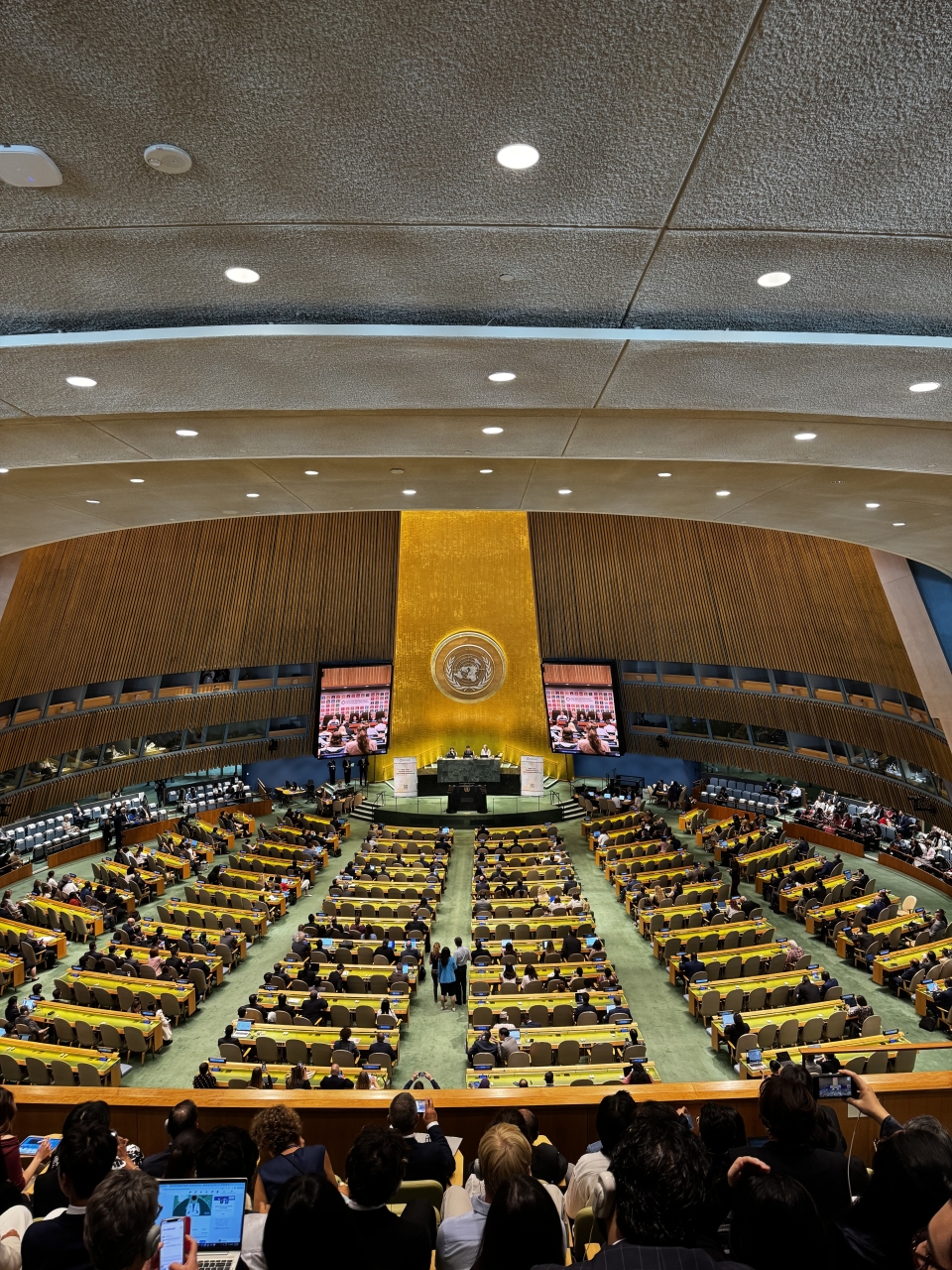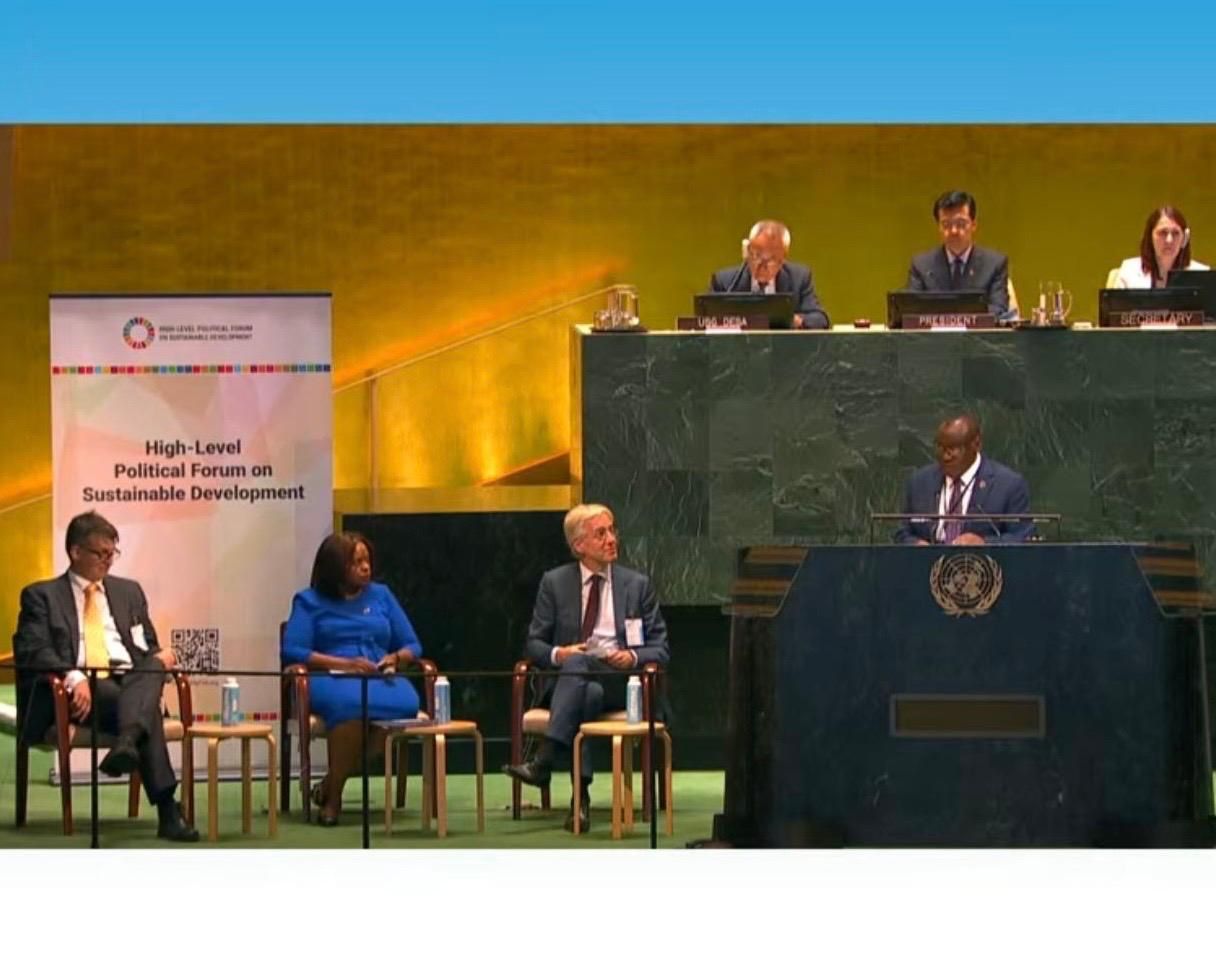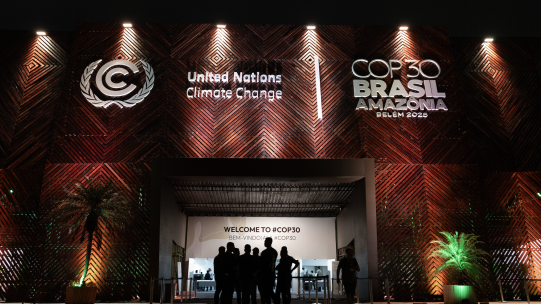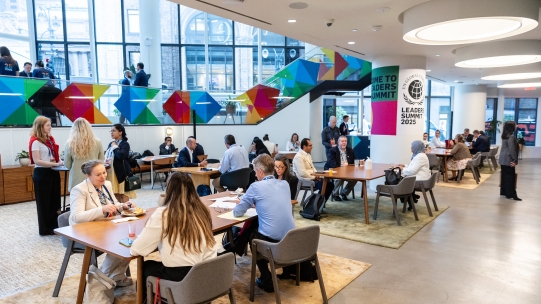Accelerating action, advancing inclusion: No one left behind at HLPF 2025
Read more

As the 2025 High-Level Political Forum (HLPF) comes to a close, the global community leaves with a renewed sense of urgency and cautious optimism. Hosted by the United Nations Economic and Social Council (ECOSOC), this year’s HLPF convened at a critical juncture: with just five years until 2030, if we are to achieve the Sustainable Development Goals (SDGs), we must make a bold and urgent call for realignment, recommitment and roadmaps for action.
From 14 to 24 July, stakeholders from governments, the private sector, civil society, multilateral institutions, academics and more came together under the core theme of HLPF: “Advancing sustainable, inclusive, science- and evidence-based solutions for the 2030 Agenda and its SDGs for leaving no one behind.”
One message echoed consistently across packed plenary halls, roundtables, and side events: transformative change is only possible through shared responsibility and collective resolve.
The business case for engagement at HLPF
For businesses, the 2025 High-Level Political Forum reinforced that sustainability is no longer a siloed corporate responsibility but a high priority cross-functional driver of long-term value creation.
The UN Global Compact and its partners spotlighted the strategic alignment between sustainability and business resilience:
- 77.4 per cent of S&P 500 firms now link executive pay to Environmental, Social and Governance (ESG) performance
- Corporate-led initiatives are closing gaps in skills, inclusion and climate resilience, from living-wage pilots to digital-skills training for youth
- Innovations in blended finance and impact measurement are unlocking new pathways for investment in infrastructure, health and gender equality
- SDG-aligned strategies help companies future-proof operations while creating societal value, particularly in volatile, rapidly changing environments
From the boardroom to the supply chain, companies that prioritize responsible practices, enhance competitiveness, manage risk, drive innovation and contribute to a more equitable world

Additionally, HLPF2025 hosted the SDG Business Forum, a dynamic platform co-hosted by the UN Global Compact, UN Department of Economic and Social Affairs (UN DESA), International Organisation of Employers (IOE) and the World Business Council for Sustainable Development (WBCSD). The forum exemplified the power of public-private collaboration, bringing together leaders from various positions to drive progress on the 2030 Agenda, It demonstrating how inclusive, cross-sector partnerships can scale impact and accelerate sustainable development.
HLPF 2025 takeaways
- No goal on track without bold action
The 2025 Sustainable Development Report revealed that two-thirds of SDG targets are off-track. Countries and companies must adopt real-time, data-driven strategies to course-correct, especially in fragile settings.
- Blended finance is essential
Despite mobilizing nearly $300 billion in private capital since 2012, a $4 trillion annual shortfall remains. The UN Global Compact CFO Coalition emphasized that innovative blended finance tools, from guarantees to sustainability-linked bonds, are needed to bridge the gap.
- Local solutions drive global impact
The growth of social-enterprise networks in Asia and Africa demonstrates the value of community-led solutions. Through Country Networks, the UN Global Compact supports city- and nation-level SDG pacts that harness local innovation.
- The private sector must lead on gender equality
With gender parity potentially adding $12 trillion to global GDP, businesses have a vested interest in dismantling systemic barriers. Gender strategies must be embedded across operations, from hiring practices to product design.
Future considerations
As we look ahead, five considerations stand out for all stakeholders:
- Translate commitments into roadmaps
Pledges are not enough. Companies must build actionable roadmaps with milestones, financing strategies and accountability metrics aligned with the SDGs.
- Invest in partnerships and platforms
Tackling today’s complex challenges requires more than isolated efforts. By building coalitions across industries and governments, stakeholders can pool resources and co-create scalable models, from climate finance mechanisms to inclusive workforce development platforms.
- Use data to drive decisions
Real-time monitoring, AI-powered forecasting and transparent reporting are foundational to success.
- Centre inclusion
Whether addressing informal work, youth unemployment or ocean health, progress must be equitable. Inclusion is not a byproduct of development. No one should left behind when promoting inclusion.
- Keep the momentum alive
The next five years will determine the legacy of the SDGs. Businesses, governments and civil society must treat each fiscal quarter not as a countdown, but as a call to accelerate and align.
Conclusion: A clear vision through a narrow window
HLPF 2025 concluded with a defining message: time is running out, but transformation is still within reach. The world stands at a crossroads with just five years left until the 2030 deadline.
This year’s Forum proved that the SDGs remain more relevant than ever. From climate adaptation and gender equality to financing and digital inclusion, each challenge discussed at HLPF is interconnected, as must be the solutions.
CEOs and CFOs must be the architects of progress. As sustainability rises to the top of board agendas and ESG metrics reshape executive incentives, companies have the mandate and the means to shape a future where people and the planet thrive. It’s time to meet the moment head-on with intention, urgency and transparency.


